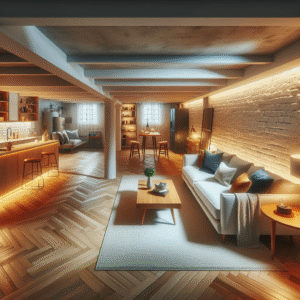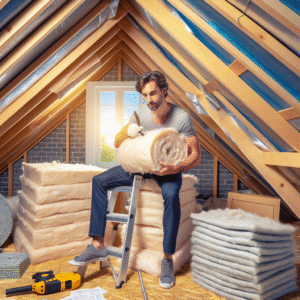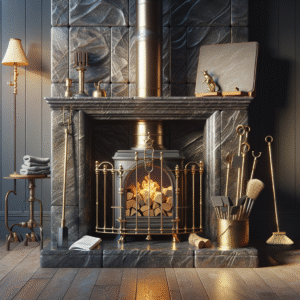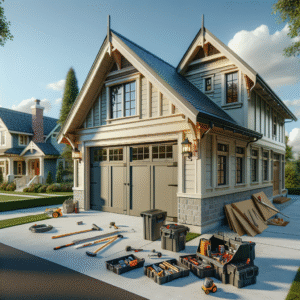Choosing the Right Fire Pit for Your Outdoor Space
Whether you’re looking to create a cozy backyard ambiance or want an elegant addition to your patio, choosing the right fire pit can transform your outdoor space. But with so many styles, sizes, and fuel options available, how do you pick the perfect one? At BuildNet, we understand the importance of matching function with aesthetics. In this blog, we’ll guide you through selecting a fire pit that not only meets your needs but also enhances your outdoor living experience.
Step-by-Step Guide to Installing a Fire Pit
Installing a fire pit might seem daunting, but with our easy-to-follow guide, you can add this charming feature to your home without professional help. From choosing the right location to gathering your materials and the final touches, we’ll walk you through each step. Get ready to enjoy endless evenings under the stars with your very own fire pit!
Safety Tips and Maintenance for Your New Fire Pit
Now that you’ve installed your new fire pit, keeping it in prime condition is crucial for safety and longevity. We’ll cover essential safety tips to ensure your gatherings are safe and enjoyable, plus easy maintenance tricks to keep your fire pit looking like new. Let BuildNet help you make the most of your outdoor feature with peace of mind.
Ready to dive in? Whether you’re a DIY enthusiast or planning to hire a professional, these insights from BuildNet will ensure that your fire pit installation is a success. Keep reading for a detailed exploration into selecting, installing, and maintaining the perfect fire pit for your home. Let’s turn those backyard dreams into a warm, inviting reality!
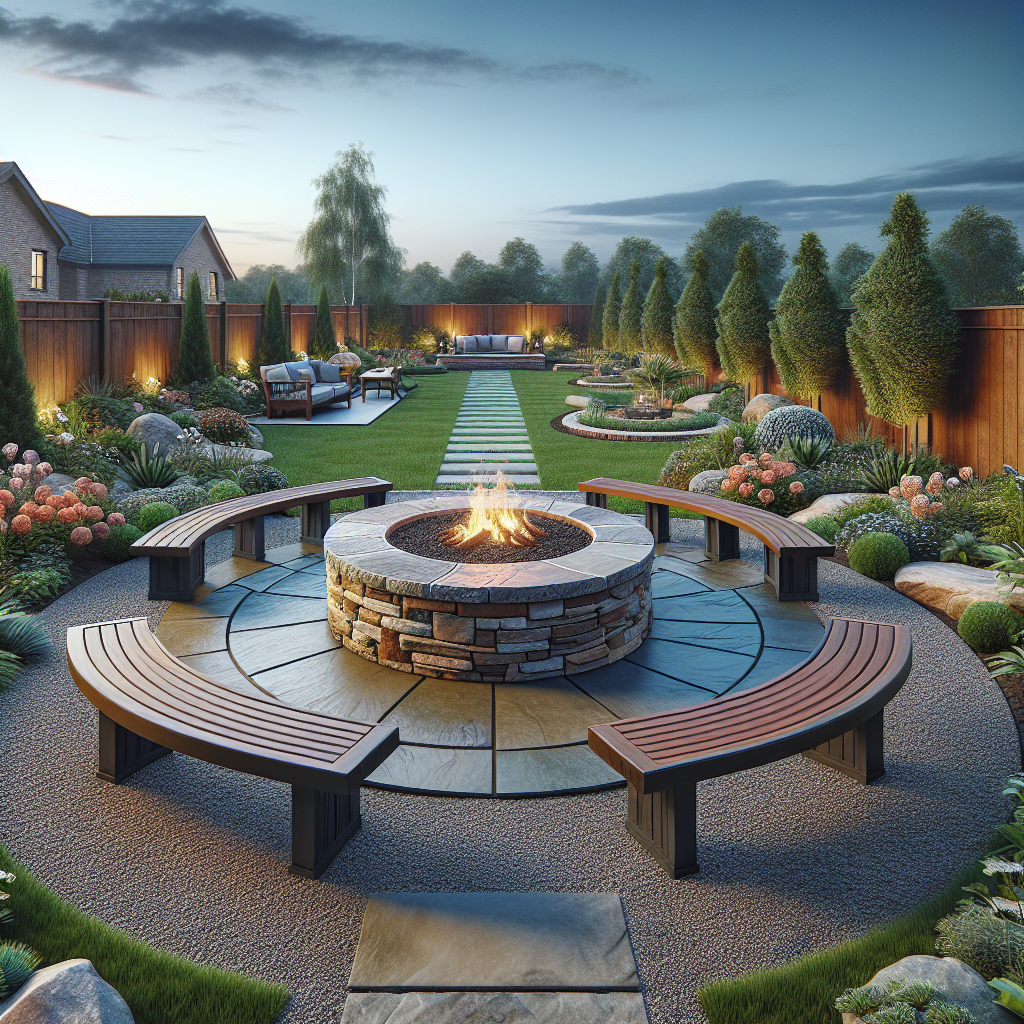
If you’re ready to take your home improvement or construction project to the next level, we can help! Find trusted contractors on BuildNet, whether you’re looking for renovations, new builds, electrical work, plumbing, or anything in between. Our directory connects you with qualified professionals who can make your vision a reality.
Choosing the Right Fire Pit for Your Outdoor Space
There’s nothing quite like a fire pit to transform your backyard into a cozy outdoor living room. Whether it’s for roasting marshmallows, enjoying a quiet evening, or hosting a lively gathering, the right fire pit can be the highlight of your outdoor space. But how do you choose the perfect one? Let’s dive into the essentials of selecting a fire pit that not only meets your needs but also enhances your outdoor décor.
Understanding the Basics: Types of Fire Pits
Before diving into the shopping phase, it’s crucial to understand the different types of fire pits available. Each type has its own benefits and can affect how you enjoy your backyard space.
- Wood Burning Fire Pits: Perfect for those who love the crackling sound and smoky aroma of real wood. These pits are ideal for a traditional campfire experience.
- Gas Fire Pits: Convenient and clean, gas fire pits offer a smokeless experience and are typically easier to maintain than their wood-burning counterparts. They’re perfect for urban settings where smoke may be a concern.
- Propane Fire Pits: Similar to gas fire pits but with the added convenience of portability thanks to the propane tank. Great for those who like to rearrange their outdoor setups frequently.
- Gel Fuel Fire Pits: Another smoke-free option, gel fuel fire pits use canisters that are easy to replace and store. They’re ideal for small spaces like patios or balconies.
- Electric Fire Pits: The ultimate in convenience, electric fire pits require no fuel at all and can be used in a variety of settings, both indoor and outdoor.
Considerations When Choosing a Fire Pit
Now that you know about the types of fire pits, let’s consider what you should think about before making a purchase. After all, you want your fire pit to fit seamlessly into your lifestyle and outdoor décor.
1. Size and Shape
The size of your fire pit should correspond to the space available and the number of people you typically host. Circular fire pits are great for larger groups, as they can accommodate more people around the perimeter. Square or rectangular options might fit better with your existing outdoor furniture layout, making them ideal for smaller, more intimate gatherings.
2. Material Matters
Fire pits are made from various materials, each affecting durability, style, and maintenance needs:
- Steel: Highly durable and available in various finishes. Steel can handle high temperatures but may rust over time if not properly maintained.
- Stainless Steel: Rust-resistant and more durable than regular steel, but usually at a higher price point.
- Cast Iron: Extremely durable and excellent at retaining heat, which makes it ideal for cooler climates. However, it is heavier, making it less portable.
- Aluminum: Rust-resistant and lightweight, aluminum is easy to move around and great for those who like to change their outdoor layout often.
- Stone: Offers a natural look that can complement any garden setting. Stone fire pits are incredibly durable but also immovable once installed.
3. Safety Features
When selecting a fire pit, safety should always be a top priority. Look for models with features like spark screens or protective guards, especially if you have pets or children. Also, consider fire pits with stable bases to prevent tipping.
4. Local Regulations
Before making your purchase, it’s important to check any local fire codes or regulations related to outdoor fire pits. Some areas have specific requirements about the type of fire pit you can use, or restrictions on burning during certain weather conditions.
Matching Your Fire Pit with Your Outdoor Decor
Your outdoor space is an extension of your home, and your fire pit should reflect that. Whether your style is rustic, modern, or somewhere in between, there’s a fire pit design to match. For a sleek, modern look, consider a minimalist gas fire pit with a geometric shape. If your home has more natural or traditional décor, a classic stone or cast iron fire pit might be more suitable.
Local Considerations
Think about the typical weather in your area. If you live in a windy region, a heavier, low-to-the-ground fire pit might be necessary to prevent ashes from blowing around. For wet climates, consider materials like stainless steel or aluminum that withstand moisture without rusting.
Choosing the right fire pit involves considering both function and form. With a thoughtful approach, you can select a fire pit that enhances your outdoor living space, provides warmth, and serves as a beautiful focal point for many enjoyable evenings outdoors.

Step-by-Step Guide to Installing a Fire Pit
Imagine a cozy autumn evening spent roasting marshmallows over a crackling fire right in your backyard. Installing a fire pit can turn this delightful scenario into a reality. Whether you’re a DIY newbie or a seasoned home improvement enthusiast, setting up a fire pit can be a straightforward and satisfying project. Let’s walk through the process step by step so you can start enjoying those fireside gatherings sooner than you think!
Step 1: Choosing the Perfect Location
First things first—the location. Selecting the right spot in your yard is crucial not only for enjoyment but also for safety. Here are a few tips:
- Compliance with Local Codes: Check your city or county regulations regarding fire pits. These rules can impact where you can place your fire pit and what safety precautions are necessary.
- Distance from Structures: Generally, fire pits should be at least 10 feet away from your house and any other structures or combustible materials.
- Level Ground: Choose a flat, stable surface to ensure your fire pit is secure and functions safely.
- Consider Wind Patterns: Notice the general direction of the wind in your yard to avoid smoke blowing directly into your home or seating area.
Step 2: Selecting Your Fire Pit Design
From rustic stone models to sleek metal designs, fire pits come in a variety of styles. Consider what matches your lifestyle and outdoor decor:
- Permanent vs. Portable: Decide if you want a built-in fire pit that is a fixed feature of your landscape or a portable model that you can move as needed.
- Material Choices: Common materials include stone, brick, metal, and concrete. Each offers different aesthetics and durability.
- Size and Shape: Make sure the size of your fire pit is proportional to your space and fits your intended number of guests.
Step 3: Gathering Your Materials
Once you’ve planned your fire pit, it’s time to gather your materials. Depending on whether you’ve chosen a pre-made kit or a custom design, your list might include:
- Bricks, stones, or a metal fire pit ring
- Mortar or construction adhesive (for stone or brick pits)
- Gravel or sand for the base
- Tools like shovels, trowels, and levels
Local hardware stores or landscape suppliers should have everything you need, and don’t forget to support local businesses when making your purchases!
Step 4: Preparing the Site
Now that you have all your materials, it’s time to prepare the site:
- Clear the Area: Remove any grass, stones, or debris from the site. Ensure the area is clean and level.
- Lay the Foundation: Add a layer of gravel or sand. This helps with drainage and provides a stable base for the fire pit.
- Compact the Base: Use a hand tamper to compact the base material, ensuring a flat surface that won’t shift over time.
Step 5: Building Your Fire Pit
With your site prepped, it’s building time:
- Set the First Layer: Carefully place your first layer of bricks or stones. Use a level to make sure everything is even.
- Secure the Structure: If you’re using mortar or adhesive, apply it between the layers of material to ensure stability.
- Continue Building: Keep adding layers until your fire pit reaches the desired height. Check frequently with your level.
- Install the Metal Ring (if applicable): If your design includes a metal ring, place it inside the pit to help protect the stone or brick from heat damage.
Step 6: Adding Finishing Touches
Once your fire pit is built, you’re almost ready to light up that first fire:
- Inspect the Fire Pit: Make sure everything is secure and there are no loose parts.
- Add Gravel Inside: Place a thin layer of gravel or sand inside the pit to help disperse heat uniformly.
- Decorate: Consider adding seating around your fire pit or planting shrubs or flowers for a cozy ambiance.
Installing a fire pit can be a rewarding project that enhances your outdoor space and provides a warm spot for family and friends to gather. By following these steps, you can ensure your fire pit is safe, sturdy, and ready for many enjoyable evenings. Remember, safety first and always have a bucket of water or a fire extinguisher nearby when enjoying your new outdoor feature. Now, grab those marshmallows and get toasting!
Safety Tips and Maintenance for Your New Fire Pit
Welcome to the cozy corner of outdoor living! If you’ve recently added a fire pit to your backyard, you’re on the brink of many memorable nights under the stars. But before we dive into the marshmallow roasting, let’s talk safety and maintenance. Keeping your fire pit in top shape not only ensures it lasts for many seasons but also keeps you, your family, and your property safe. Let’s light up the conversation with some essential tips!
Getting Started with Fire Pit Safety
First things first, safety is paramount when you’re dealing with open flames. Here are some initial pointers to keep in mind:
- Location, Location, Location: Always place your fire pit on a non-flammable surface such as stone, brick, or concrete. Keep it at least 10 feet away from your house and any greenery to prevent unintended fires.
- Check the Weather: Avoid using your fire pit on windy days as sparks can easily spread and start a blaze.
- Permission and Codes: Check with your local fire department or municipal guidelines to ensure that your fire pit adheres to local fire codes and regulations.
Operational Safety Measures
Once your fire pit is correctly positioned and it’s a calm evening, follow these steps to keep the fire burning safely:
- Keep a Fire Extinguisher Handy: Always have a fire extinguisher or a bucket of sand or water close by for emergencies.
- Supervise Children and Pets: Never leave children or pets unattended near the fire pit. Establish a safety zone to keep them at a safe distance.
- Use the Right Wood: Hardwoods like oak or hickory are ideal as they burn longer and produce less spark. Avoid using soft woods like pine or cedar, which can pop and throw sparks.
- Lighting the Fire: Use a commercial fire starter or natural alternatives like dry twigs and paper. Never use gasoline or other accelerants as they can cause uncontrollable flames.
Maintaining Your Fire Pit
Regular maintenance not only extends the life of your fire pit but also keeps it safe to use. Here’s how to keep yours in great condition:
- Clean Regularly: After each use, once the fire pit has cooled down, remove ash and unburnt wood. This prevents accumulation and potential reignition.
- Check for Damage: Regularly inspect your fire pit for cracks, rust, or other wear. Repair or replace parts as necessary to maintain its structural integrity.
- Cover It Up: Use a weather-resistant cover to protect your fire pit from the elements when it’s not in use. This will prevent rusting and debris accumulation.
- Seasonal Care: If you live in an area with harsh winters, consider storing your fire pit indoors or keep it covered with a heavy-duty protective cover.
Creating a Safe Environment
Ensuring a safe environment around your fire pit involves more than just operational safety; it’s about creating the right ambiance and setting precautions:
- Fire-Resistant Materials: Invest in fire-resistant mats or pads if your fire pit sits on a wooden deck or similar surface.
- Proper Seating: Arrange seats at a safe distance from the fire pit to prevent accidental contact with flames or hot surfaces.
- Ambient Lighting: While the fire provides natural light, having additional lighting like solar lamps or string lights can prevent tripping in the dark.
Conclusion
Caring for and safely operating your fire pit isn’t just about following rules—it’s about creating a secure, relaxing environment for everyone to enjoy. With these tips, you’re all set to enjoy countless evenings of warm, safe, and stress-free gatherings around your new fire pit. Light those fires responsibly!
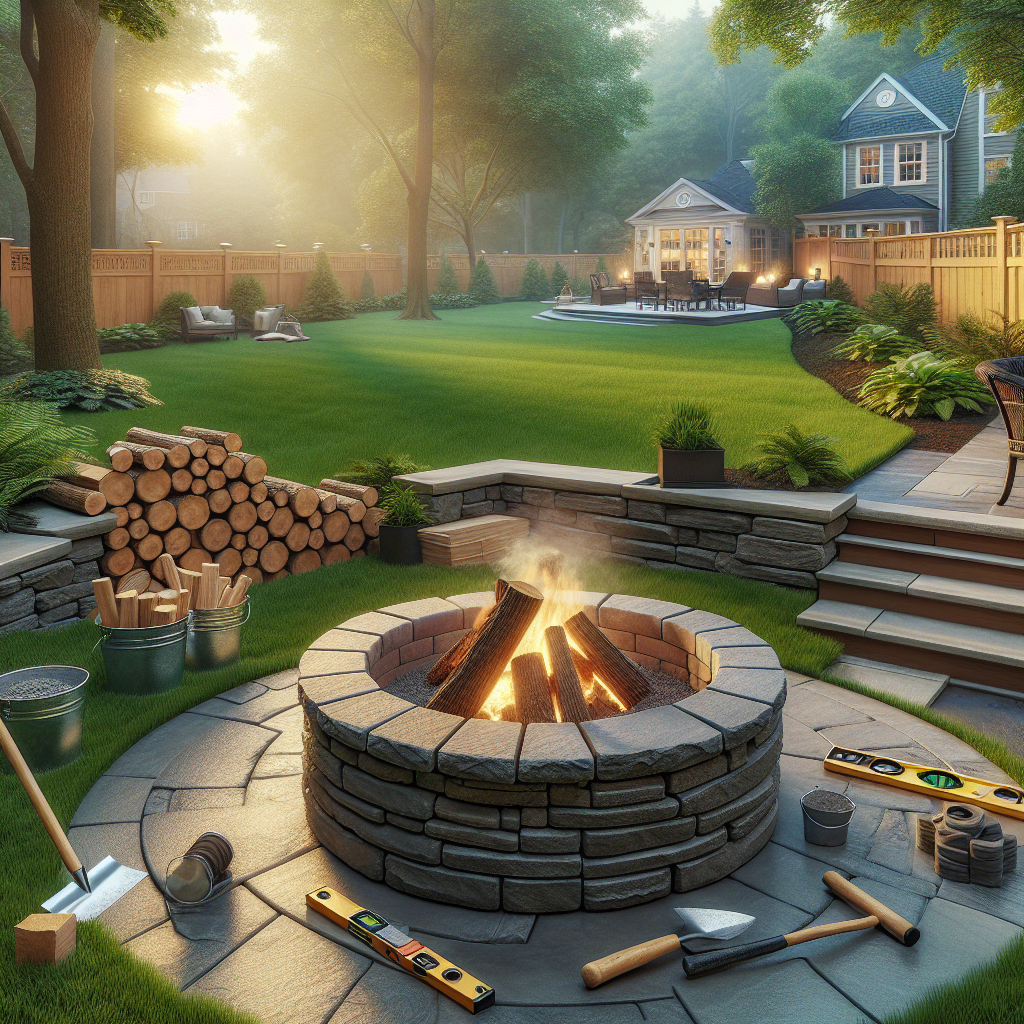
What Factors Should I Consider When Choosing a Fire Pit for My Outdoor Space?
Choosing the right fire pit involves several considerations to ensure it complements your outdoor area, meets local regulations, and suits your lifestyle. Key factors include:
- Size and Scale: Ensure the fire pit fits comfortably in your space, allowing for ample seating and movement around it.
- Material: Popular materials include metal, stone, and concrete, each offering different aesthetics and durability.
- Style: From rustic wood-burning options to sleek, gas-powered designs, select a style that matches your outdoor decor.
- Local Regulations: Check local codes for any restrictions or requirements for fire pit installation.
- Safety Features: Consider models with safety screens or protective barriers especially if you have children or pets.
How Do I Install a Fire Pit in My Backyard?
Installing a fire pit can be a rewarding DIY project or something you might want a professional to handle. Here is a simplified process:
- Location: Choose a level, open location away from structures and low-hanging branches.
- Preparation: Clear the area of debris and dig a pit according to the size of your fire pit.
- Base: Add a layer of gravel for drainage and stability.
- Assembly: Place your fire pit unit or build it using fire-resistant materials.
- Check Regulations: Ensure your setup complies with local fire codes.
What Are the Essential Safety Tips for Using a Fire Pit?
Ensuring the safety of your fire pit is crucial to enjoy it without accidents:
- Supervision: Never leave the fire unattended. Always extinguish it completely before leaving it.
- Protective Gear: Use a spark screen and have a fire extinguisher or a bucket of sand nearby for emergencies.
- Clear Area: Maintain a clear area around the fire pit, free from flammable materials and debris.
- Usage: Follow manufacturer’s instructions for use and start the fire small to control it easily.
How Often Should I Maintain My Fire Pit and What Does It Include?
Maintaining your fire pit is essential to prolong its life and maintain safety. Regular maintenance includes:
- Cleaning: Remove ash and debris after each use once the pit is cool.
- Inspection: Regularly check for cracks or damage, particularly with stone or concrete pits.
- Cover: Use a protective cover to shield your fire pit from the elements when not in use.
- Rust Prevention: For metal fire pits, apply a rust-proofing agent periodically.
Can I Build a Custom Fire Pit or Should I Buy a Pre-Made Model?
Whether to build a custom fire pit or buy a pre-made model depends on your specific needs and skills:
- Custom Fire Pits: Allow for complete customization to fit your space and aesthetic. However, they require more time and potentially higher costs.
- Pre-Made Fire Pits: Offer convenience and are generally easier and quicker to install, but they may not perfectly suit your preferred style or size.
What Are the Best Practices for Positioning a Fire Pit in My Yard?
Positioning is critical for safety and enjoyment. Ensure to:
- Choose a Level Surface: Stability is key to prevent accidental tipping.
- Maintain Distance: Place the fire pit at least 10 feet away from your house and any structures or trees.
- Consider Wind: Be aware of prevailing winds and position the fire pit to minimize smoke disturbance.
Conclusion: Adding a fire pit to your outdoor space can transform it into a cozy gathering spot for friends and family. Whether you choose a sleek gas model or a traditional wood burner, it’s vital to select the right design, install it properly, and follow safety protocols to ensure years of enjoyment. Remember to conduct regular maintenance to keep it in excellent condition. If you’re unsure about the installation process or selecting the right model, don’t hesitate to contact a contractor on the BuildNet website for a free quote. They can provide professional advice and help tailor a solution that best fits your needs and ensures your fire pit is a safe, enjoyable addition to your home.

